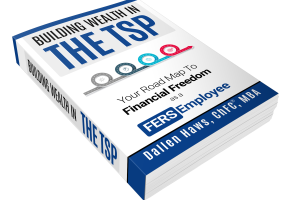Navigating retirement successfully requires a thoughtful approach to managing your Thrift Savings Plan (TSP). By understanding and tailoring your investment strategies, you can create a sustainable plan to support your financial goals. One popular strategy, the 60/40 allocation, balances growth and stability, but it may not be suitable for everyone depending on individual circumstances.
The TSP Funds Using the 60/40 Allocation
The 60/40 (60% stocks and 40% bonds) TSP allocation divides your retirement savings between two primary types of investments:
Stocks (C, S, and I Funds): Generally expected to provide higher returns over the long term, albeit with higher risk due to market volatility.
Bonds (G and F Funds): Typically offer stability and lower risk, making them a safe choice for preserving capital and generating steady income. Even though the G fund invests a little differently than a bond fund, we will still consider it a conservative investment.
Benefits of a 60/40 Allocation
Diversification: By splitting your funds between stocks and bonds, you reduce risk. Stocks have the potential for high growth, while bonds provide a cushion against market fluctuations.
Risk Management: The 60/40 allocation allows you to strike a balance between aggressive growth and more conservative income generation. This can be especially useful for those nearing or in retirement, ensuring that a portion of your portfolio is stable while still allowing room for growth.
Historical Performance: Historically, a 60/40 allocation has provided a reasonable balance between risk and return, making it a widely recommended starting point for many investors.
Rebalancing: This approach allows for regular rebalancing, ensuring that your portfolio remains aligned with your risk tolerance and goals over time.
Does the 60/40 TSP Allocation Apply to You?
If you have many years before retirement, you may lean more toward a higher percentage of stocks to capitalize on the potential for growth. Conversely, if you are nearing retirement, you might want to start investing in the G and F funds. But even in retirement, it’s almost never recommended to go 100% into the G and F funds. These funds are safe but won’t grow enough to beat inflation and maintain your lifestyle over time.
Factors such as other income sources (Social Security, pensions), family obligations, and personal preferences should influence your allocation. If you have other income to rely on, you may feel more comfortable with a higher allocation in stocks.
Good Rules of Thumb
The Bucket Strategy – This strategy divides retirement investments into different timeframes, such as cash, mid-term, and long-term buckets. Each bucket is designed to meet specific financial needs: the cash bucket covers immediate income needs, the mid-term bucket provides stability, and the long-term bucket focuses on growth. It’s good to have at least 2-4 years worth of needed withdrawals in the cash bucket, the next 2-4 years of withdrawals in the mid-term bucket, and any money that you’d need after that can go into the long-term bucket. In terms of the TSP, this could mean having 8 years worth of withdrawals invested in the G and F funds while having the rest of your money invested in the C, S, and I funds.
4% Rule – This rule provides a guideline for sustainable withdrawals from retirement savings. It suggests withdrawing 4% of your total balance annually in the first year of retirement and adjusting for inflation in subsequent years. This rule aims to provide a stable income while minimizing the risk of depleting savings. Typically applied to a balanced portfolio of stocks and bonds, it helps maintain a conservative, yet potentially sustainable, withdrawal strategy.
For more information on these strategies, check out this article: https://hawsfederaladvisors.com/using-the-4-rule-bucket-strategy-for-your-tsp/
Conclusion
The 60/40 TSP allocation provides a balanced approach to investing for retirement, blending the growth potential of stocks with the stability of bonds. However, it may not be suitable for everyone. By considering your time horizon, risk tolerance, and financial goals, you can determine if a 60/40 allocation is the right fit for you. Whether you choose to stick with this strategy or adjust it based on your unique circumstances, thoughtful planning is essential to achieving your retirement aspirations.


